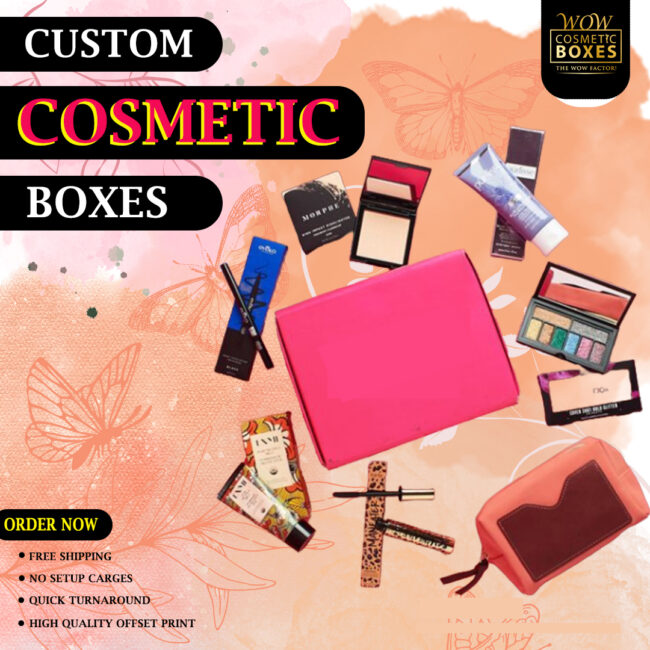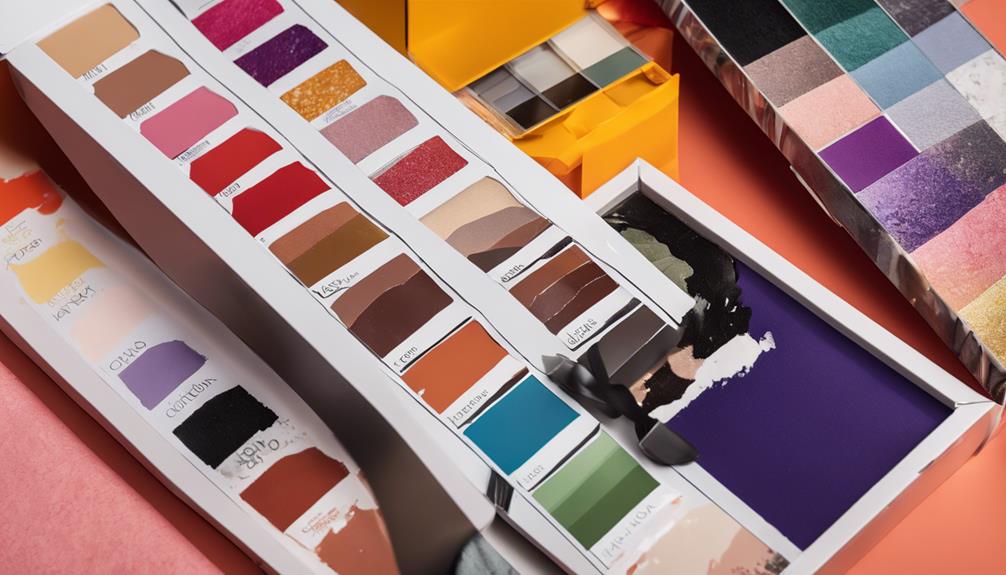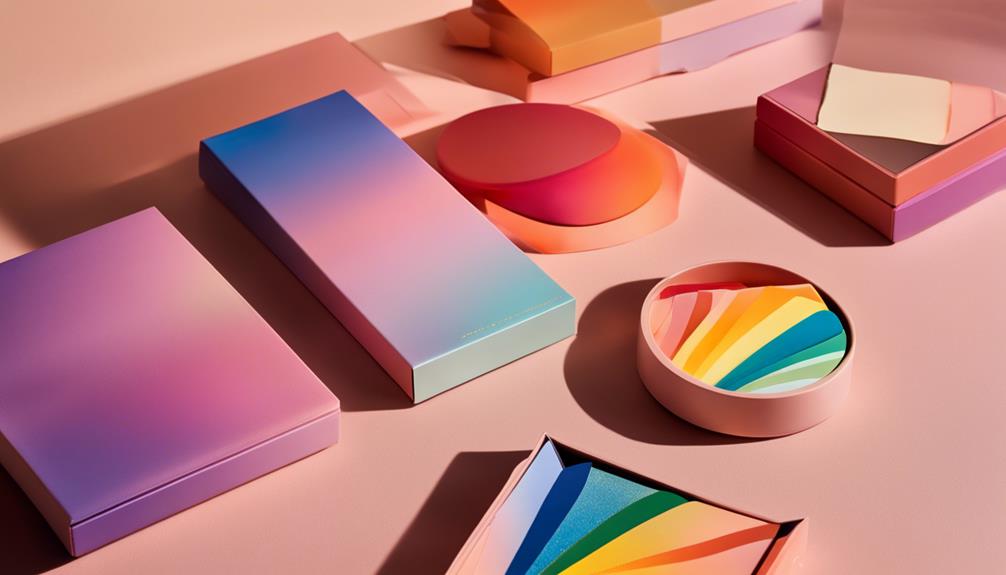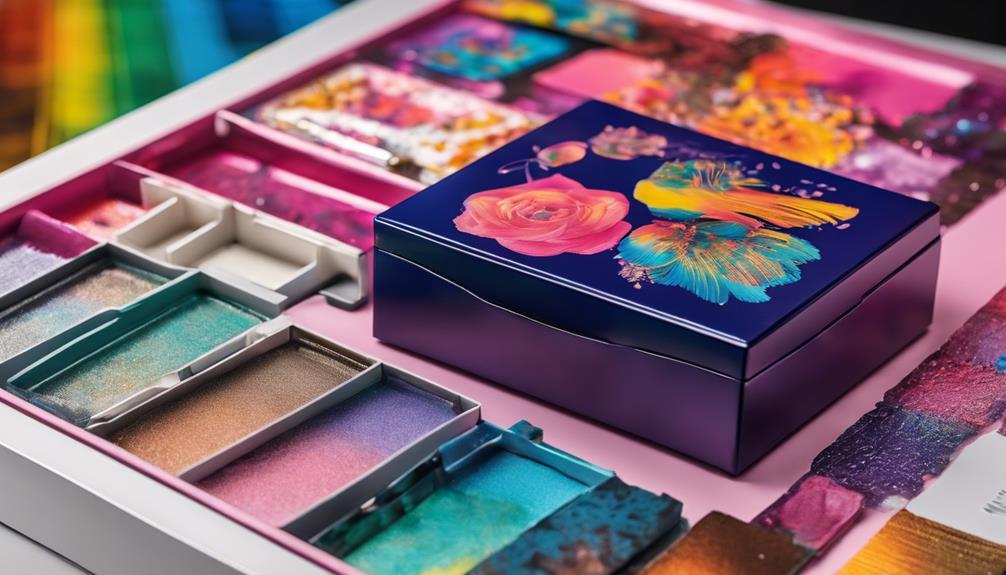
To understand factors that impact cosmetic box print quality, focus on material selection, printing techniques, and design elements. Your choice of substrate affects ink absorption, which directly influences print clarity and vibrancy. Consider digital or offset printing methods based on your quantity needs. Keep color accuracy in mind by calibrating equipment and conducting regular quality checks. Design elements like typography and color schemes must align with your brand image to captivate consumers. Finishing processes like lamination and embossing enhance aesthetic appeal. By prioritizing these aspects, you can guarantee high-quality print output for your products and their impact. Explore further insights for better results.
Main Points
- The choice of substrate affects ink absorption, directly influencing the print clarity and vibrancy of cosmetic boxes.
- Color accuracy hinges on calibration practices and high-quality materials to ensure consistent representation across batches.
- Printing techniques, like digital and offset printing, play a crucial role in achieving the desired quality and efficiency for production runs.
- Finishing processes such as lamination and UV coating enhance the aesthetic appeal and durability of cosmetic box prints.
- Regular quality control measures throughout production help identify defects early, ensuring a high standard of print quality in the final product.
Material Selection

In relation to material selection for cosmetic boxes, the choice greatly influences print quality and overall presentation. You need to evaluate the substrate, as different materials absorb ink differently, affecting clarity and vibrancy.
For example, custom packaging materials like paperboard offer a smooth surface that enhances print quality but may have higher sustainability considerations. Opting for recycled materials can improve your brand’s eco-friendly image but may come with increased cost implications.
Furthermore, you must weigh the trade-offs between durability and print fidelity; a thicker material could provide better protection but might escalate costs. Understanding these factors will help you make informed decisions that balance aesthetics, functionality, and sustainability, in the end elevating your product’s appeal in a competitive market.
Printing Techniques
Selecting the right printing technique is essential for achieving high-quality results in cosmetic box production.
You’ll typically choose between digital printing and offset printing, depending on your project needs. Digital printing offers flexibility and quick turnaround times, making it ideal for short runs or customized designs. It allows for intricate details and vibrant colors, ensuring your boxes stand out.
Furthermore, advancements in printing techniques have made it easier to achieve high-quality graphics that align with brand aesthetics.
However, offset printing excels in producing large quantities with consistent quality. It’s often more cost-effective for bulk orders, providing sharp images and precise color matching.
Understanding the specific advantages and limitations of each method will help you make an informed decision, in the end impacting the visual appeal and marketability of your cosmetic packaging.
Color Accuracy

Achieving color accuracy is vital for cosmetic box production, as it directly influences brand perception and consumer trust. To guarantee this accuracy, you must implement rigorous color calibration practices throughout the printing process. This involves regularly adjusting your printing equipment to match standardized color profiles, thereby minimizing discrepancies.
Furthermore, maintaining color consistency across different batches is essential; variations can lead to consumer confusion or dissatisfaction. Utilizing high-quality materials in your packaging, such as custom perfume boxes, can further enhance the visual appeal and guarantee that colors are represented accurately.
Utilize spectrophotometers to measure and compare color outputs, confirming they align with your brand’s specifications. Regular quality checks can help identify any deviations early, allowing for timely corrections.
Design Elements
Effective design elements play a crucial role in cosmetic box packaging, impacting both functionality and aesthetics.
To achieve print quality that resonates with consumers, focus on these key aspects:
- Design Trends: Stay updated with current design trends to guarantee your packaging feels modern and relevant, which can greatly elevate your custom makeup kit boxes.
- Typography Choices: Select typography that complements your brand identity while assuring readability and visual appeal.
- Color Scheme: Employ a cohesive color scheme that aligns with your product’s purpose and target audience.
- Layout and Composition: Optimize layout and composition for clear messaging, utilizing space effectively to guide the consumer’s eye.
Finishing Processes

Finishing processes are essential in elevating the overall quality of cosmetic box packaging, directly influencing both appearance and durability.
By applying glossy lamination, you enhance the vibrancy of printed colors, making your design pop. On the other hand, a matte finish offers a sophisticated, tactile experience, reducing glare and fingerprints.
Employing embossing techniques can create a three-dimensional effect, adding depth and interest to your packaging. Moreover, UV coating provides a protective layer, safeguarding against scratches and fading while enhancing color richness.
Foil stamping can impart a luxurious feel, drawing attention to specific elements. In addition, customization options allow for unique design features that can further enhance the visual appeal of your boxes.
Quality Control Measures
Quality control measures play an essential role in ensuring that cosmetic box packaging meets high standards of excellence.
Implementing effective quality assurance processes guarantees production consistency and enhances overall product integrity.
Here are four key measures to evaluate:
- Pre-Production Inspection: Evaluate raw materials for defects before the manufacturing process begins.
- In-Process Monitoring: Continuously assess printing and finishing techniques to identify issues early.
- Final Quality Checks: Conduct thorough inspections of completed boxes for print accuracy and aesthetic appeal.
- Feedback Loops: Gather data from customers and production teams to refine processes and address recurring issues.

